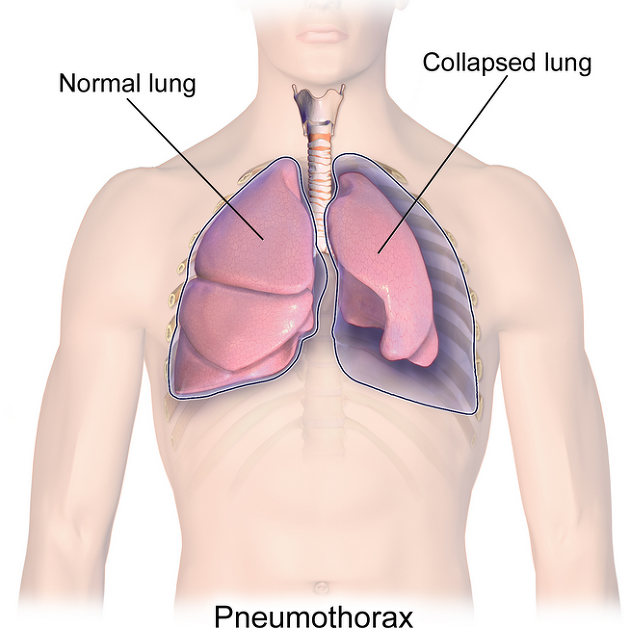Pneumothorax is a collapsed lung condition that occurs when air escapes from the lung and fills into the space between the lung and chest wall. This air build-up puts pressure on the lung reducing its ability to expand while breathing.

It is the second most commonly occurring cancer in the world.
Symptoms of Pneumothorax
Initially kidney failure may cause no symptoms but later it may cause following symptoms:
-
Sharp pain in chest or shoulder that worsens on deep breathing or coughing
-
Chest tightness
-
Shortness of breath
-
Nasal flaring
-
Bluish discoloration of skin due to oxygen deficiency
-
Light headedness
-
Rapid heart rate
-
Fatigue
Diagnosis of Pneumothorax
The diagnosis starts with physical examination and listening to patient’s breathing with a stethoscope that may show decreased breath sounds or no breath sounds on the affected side. In addition to this, following tests are performed to confirm the diagnosis:
-
Arterial blood gases
-
Chest x-ray
-
CT scan
-
Electrocardiogram
Laparoscopic surgery for Pneumothorax
Video-assisted thoracoscopic surgery (VATS) with pleurodesis and/or closure of leaks and bullectomy is performed for pneumothorax. The procedure is performed under general anaesthesia through small incisions, using laparoscope and other long-handled surgical tools. The surgeon looks for the leaking bleb and closes it off. In some cases, a substance may be used to irritate the tissues around the lung so that they'll stick together and seal any leaks.
Advantages of Laparoscopic surgery for Pneumothorax
-
Faster recovery
-
Only few hours or overnight hospitalization
-
Earlier ambulation
-
Sooner return to work
-
Very less pain during and after the procedure
-
Smaller incisions without any cut on abdominal muscles
-
Negligible risks and complications
-
Less chances of wound infection
-
High success rate
-
Better chance of breathing normally
-
Better quality of life








